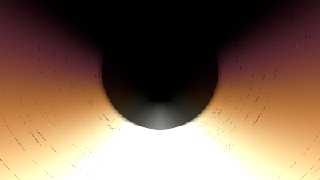|
 |
When we speak or even think about such things, we must not do this by
imaging the materials we are using today. I agree, the bigger an object,
the more fragile it is.
I personally believe, as our knowledge and skills expand steadily
through the decades and centuries (and millennia), we will have very
exotic and very stable materials in the future. Already today, we are
able to process and also to manipulate materials on the nano level, even
molecular.
For some of the space vessels of my Space Ark, to give an example, I
imagined an out material of industrially grown (or even 3D-printed)
diamond, with integrated circuits and sensors and all such, all grown on
a molecular level.
Same here: for such a hypothetical vast construction like this habitat
cylinder, the children of our children would use materials that overcome
the weaknesses of today's materials.
But beside: I am also stating clearly, that I believe, such habitat
cylinders will never be build. Before that happens, our progenies will
found ways to simulate gravity through something in the ship floors. The
attributes of matter are responsible for gravity. They will find ways,
as we always have found. I think, I even would take some bet on that.
I just render my own cylindrical habitat, because Mike Horvath's habitat
inspired me, I admit. :-)
Post a reply to this message
|
 |
|
 |
My architects continued on our artificial light. See here the day
colors, the night, and the light colors in between. I made sure, the
evenings are full of beautiful colors.
But what about the morning light? At the moment, it is identical to our
sunset light. But in real life, ti is not. If you like, propose your own
colors for the morning light. For that purpose, I have attached my
self-developed POV-Ray color mixer. And below, see the existing Sunset code.
------------------
#declare LightSectionHalf = union
{
light_source { < 0.0, LightDistance, 0.0 > rgb < 1.00000, 0.98824,
0.88235 > * MyLightMultiplicator*25 spotlight point_at < 000.0, -1500.0,
0.0 > radius 10 tightness 10 falloff 20 rotate < 0.0, 0.0, 2.5 > }
light_source { < 0.0, LightDistance, 0.0 > rgb < 1.00000, 0.98824,
0.88235 > * MyLightMultiplicator*25 spotlight point_at < 050.0, -1350.0,
0.0 > radius 10 tightness 10 falloff 20 rotate < 0.0, 0.0, 2.5 > }
light_source { < 0.0, LightDistance, 0.0 > rgb < 1.00000, 0.98824,
0.88235 > * MyLightMultiplicator*25 spotlight point_at < 100.0, -0950.0,
0.0 > radius 10 tightness 10 falloff 20 rotate < 0.0, 0.0, 2.5 > }
light_source { < 0.0, LightDistance, 0.0 > rgb < 1.00000, 0.98824,
0.88235 > * MyLightMultiplicator*25 spotlight point_at < 150.0, -0700.0,
0.0 > radius 10 tightness 10 falloff 20 rotate < 0.0, 0.0, 2.5 > }
light_source { < 0.0, LightDistance, 0.0 > rgb < 1.00000, 0.98824,
0.88235 > * MyLightMultiplicator*18 spotlight point_at < 175.0, -0600.0,
0.0 > radius MyRadius tightness MyTightness falloff MyFalloff rotate <
0.0, 0.0, 5.0 > }
light_source { < 0.0, LightDistance, 0.0 > rgb < 1.00000, 0.88627,
0.50196 > * MyLightMultiplicator*15 spotlight point_at < 200.0, -0550.0,
0.0 > radius MyRadius tightness MyTightness falloff MyFalloff rotate <
0.0, 0.0, 7.5 > }
light_source { < 0.0, LightDistance, 0.0 > rgb < 1.00000, 0.69412,
0.28235 > * MyLightMultiplicator*12 spotlight point_at < 225.0, -0500.0,
0.0 > radius MyRadius tightness MyTightness falloff MyFalloff rotate <
0.0, 0.0, 10.0 > }
light_source { < 0.0, LightDistance, 0.0 > rgb < 0.99608, 0.35686,
0.08627 > * MyLightMultiplicator*09 spotlight point_at < 250.0, -0450.0,
0.0 > radius MyRadius tightness MyTightness falloff MyFalloff rotate <
0.0, 0.0, 12.5 > }
light_source { < 0.0, LightDistance, 0.0 > rgb < 0.76863, 0.27059,
0.05882 > * MyLightMultiplicator*06 spotlight point_at < 275.0, -0400.0,
0.0 > radius MyRadius tightness MyTightness falloff MyFalloff rotate <
0.0, 0.0, 15.0 > }
light_source { < 0.0, LightDistance, 0.0 > rgb < 0.54902, 0.10980,
0.10980 > * MyLightMultiplicator*04 spotlight point_at < 300.0, -0350.0,
0.0 > radius MyRadius tightness MyTightness falloff MyFalloff rotate <
0.0, 0.0, 17.5 > }
light_source { < 0.0, LightDistance, 0.0 > rgb < 0.43922, 0.09412,
0.16078 > * MyLightMultiplicator*02 spotlight point_at < 325.0, -0300.0,
0.0 > radius MyRadius tightness MyTightness falloff MyFalloff rotate <
0.0, 0.0, 20.0 > }
light_source { < 0.0, LightDistance, 0.0 > rgb < 0.31373, 0.07843,
0.14902 > * MyLightMultiplicator*00 spotlight point_at < 350.0, -0250.0,
0.0 > radius MyRadius tightness MyTightness falloff MyFalloff rotate <
0.0, 0.0, 22.5 > }
light_source { < 0.0, LightDistance, 0.0 > rgb < 0.15294, 0.04706,
0.10588 > * MyLightMultiplicator*00 spotlight point_at < 375.0, -0200.0,
0.0 > radius MyRadius tightness MyTightness falloff MyFalloff rotate <
0.0, 0.0, 25.0 > }
}
Post a reply to this message
Attachments:
Download 'sl - colony ship i.png' (42 KB)
Download 'povcolors.exe.dat' (418 KB)
Preview of image 'sl - colony ship i.png'

|
 |




![]()